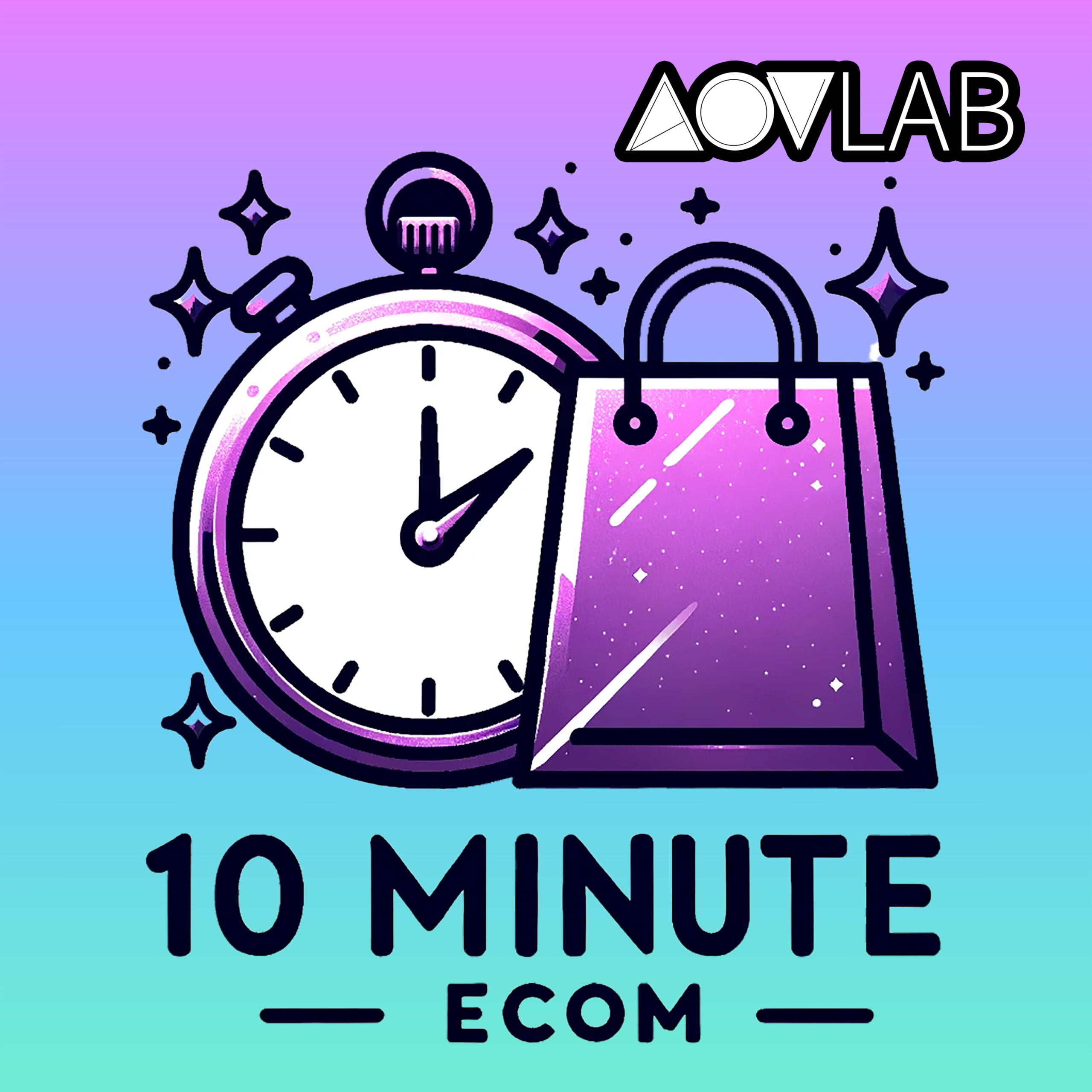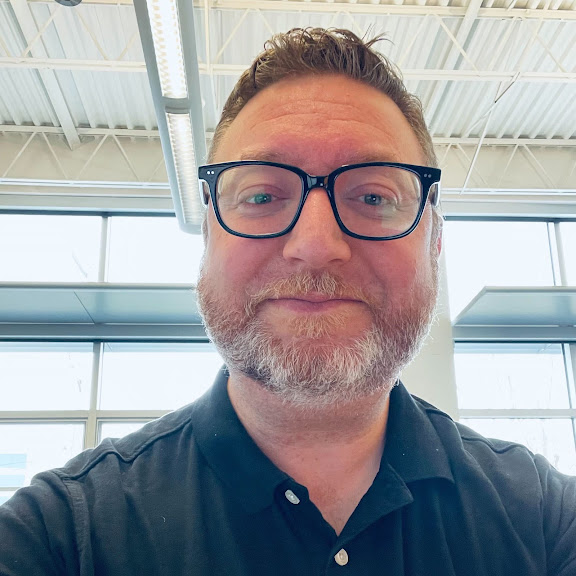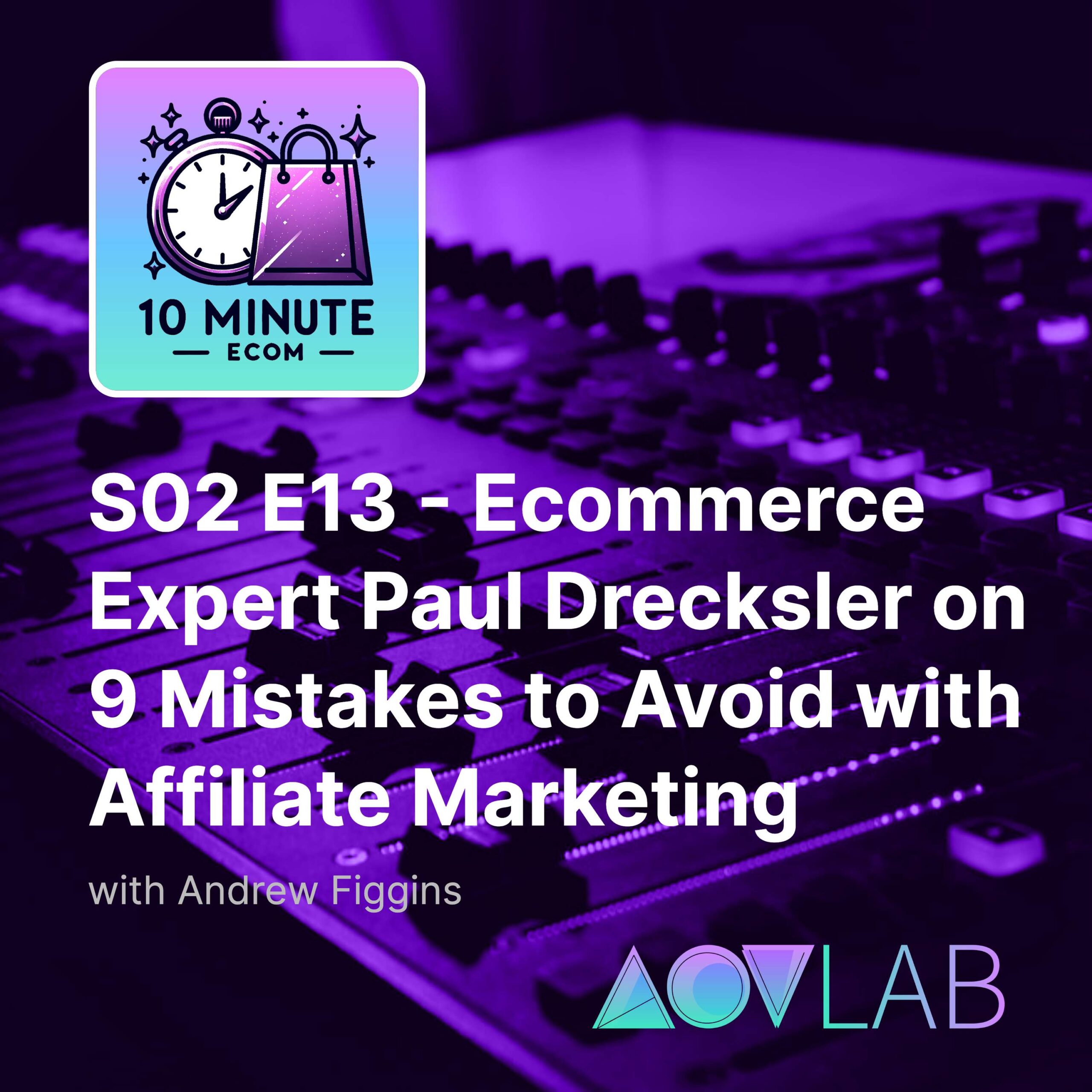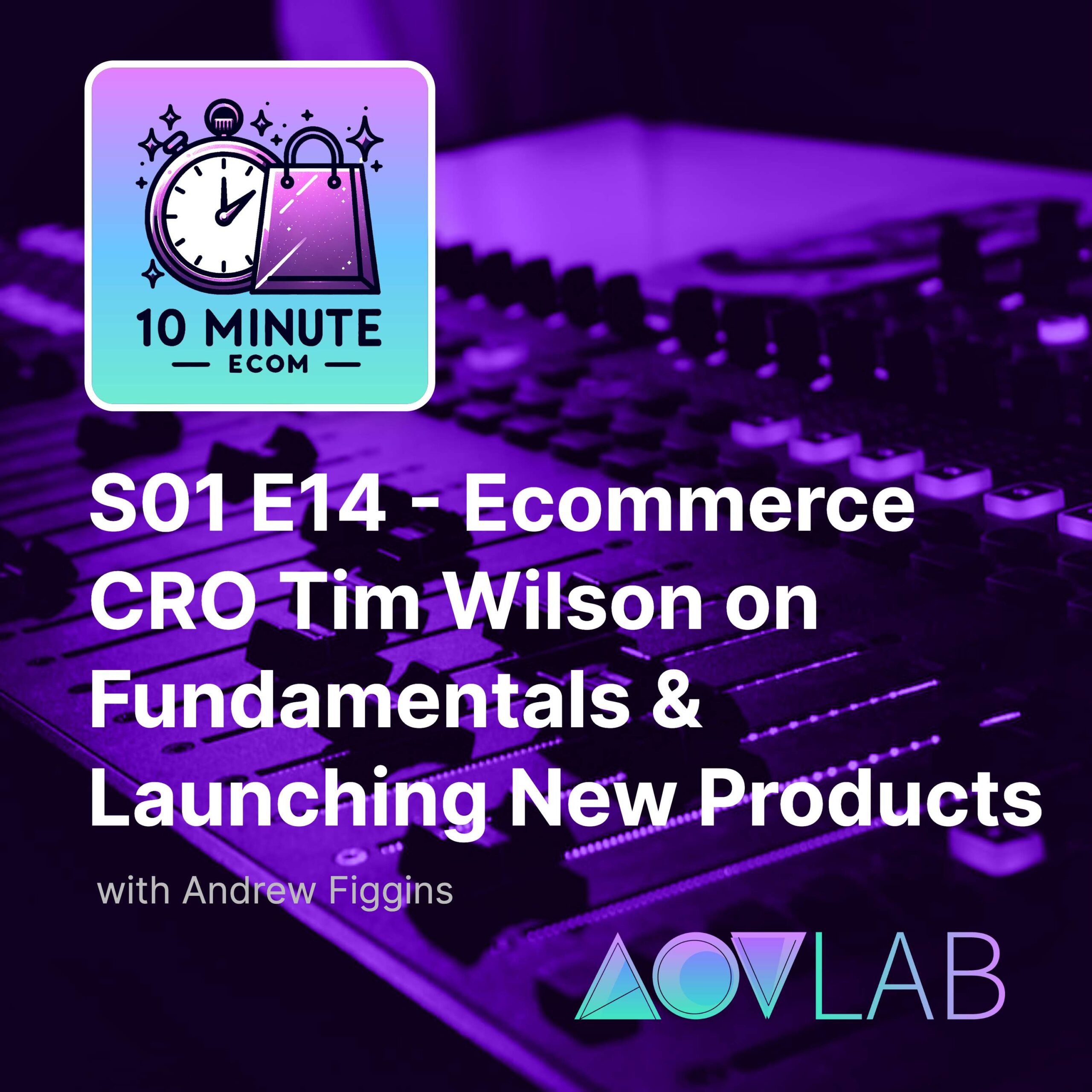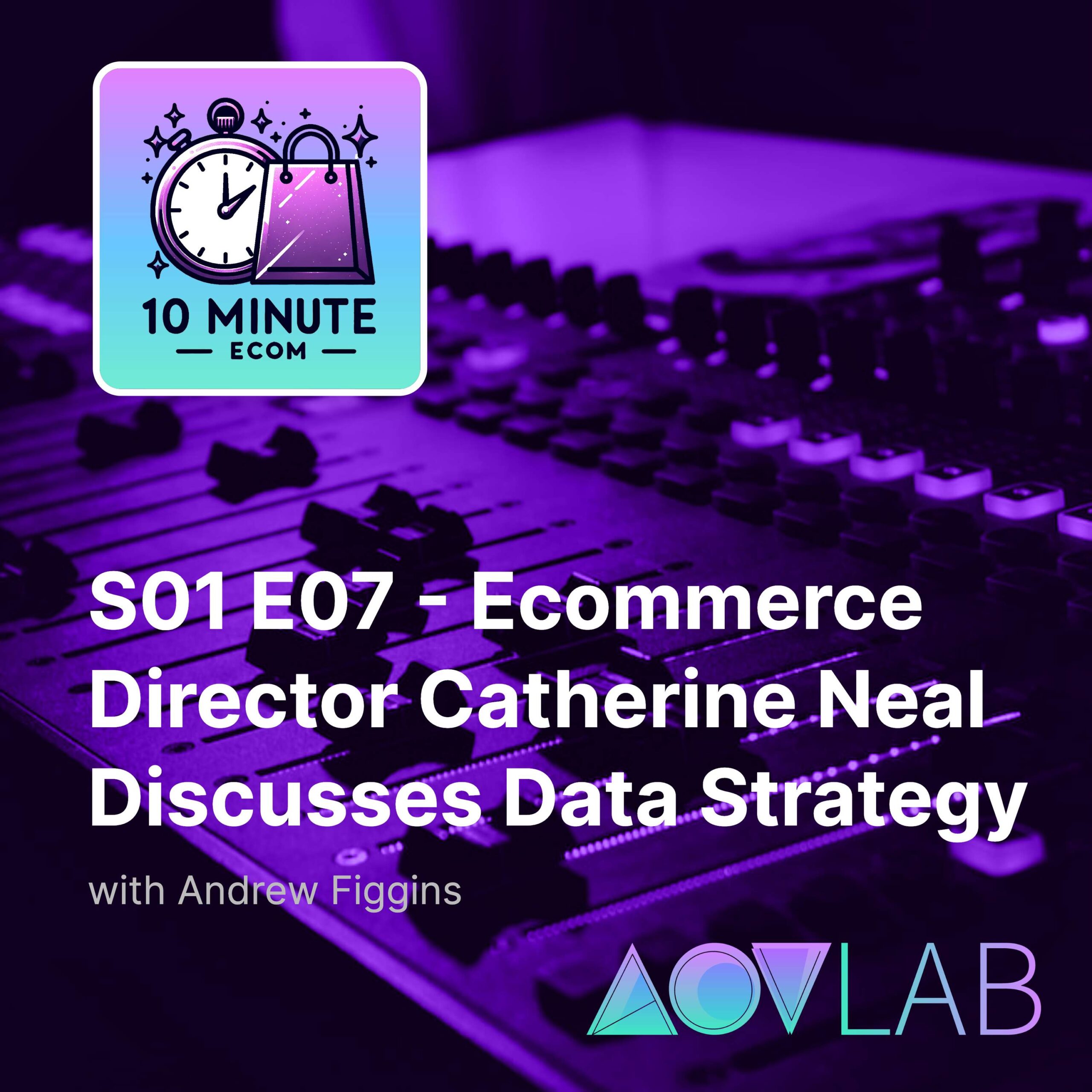Guest: Evan Tennant, Director of Ecommerce, Standard Calibrations Inc.Host: Andrew Figgins, Founder, AOV Lab Episode Synopsis:Evan draws upon his rich Ecom experiences with Peterbilt, selling NFL grill mats, and selling colorful iPhone accessories online to convey how internal advertising worked as a tactic to guide and assist customers in finding new, relevant products that they otherwise would not have navigated to on their own. Full Transcript: Hello, Ecommerce fans and welcome to 10-Minute Ecom, an AOV lab podcast. Every episode, we break down a new and different tactic that can help you improve your Ecommerce KPIs, key performance indicators. I’m […]
View Full Transcript
Episode Transcript
[00:00:15] Speaker A: Ecommerce fans. And welcome to Ten Minute Ecom, an AOV Lab podcast. Every episode, we break down a new and different tactic that can help you improve your ecommerce. KPIs key performance indicators. I'm your host, Andrew Figgins, and like most of you, I'm an e commerce professional. You may know me as the former VP of Digital Product Innovation at Scruz and beyond, or as the former director of e Commerce Technology at Rural King, or just from LinkedIn.
Today I'm excited to be talking to Evan Tennant, an e commerce colleague that has held a variety of interesting roles in e commerce. Evan, welcome to the show.
[00:00:53] Speaker B: Hello, I'm Evan Tennant, and I'm here from Standard Calibrations, Incorporated. I have a background working with apparel, working in automotive furniture, and a variety of ecommerce clients over the last 15 years. Notable ones would be New Balance diesel Peterbilt trucks as well, and Slumberland furniture stores.
[00:01:12] Speaker A: What did you come on the show to share today with your ecommerce colleagues?
[00:01:16] Speaker B: One thing that I feel like is working in ecom that is underappreciated is the concept of internal advertising and context. Excellent. And I can't wait to get into.
[00:01:25] Speaker A: The conversation with Evan, and we'll do that right after this ad. Today's episode of ten minute Ecom is brought to you by constructor IO. If your website isn't relying on Constructor's machine learning algorithms to power your site search recommendations and quizzes, you are leaving money on the table. And I know what you're thinking. The host of this show, Andrew Figgins, not only can he host the show, but he can also read podcast ads that he wrote. Is this man proving right now that he's a double threat? Not a triple threat, just a double threat. You're not wondering that. Okay, back to constructor.
[00:02:00] Speaker C: I saw up close just how effective.
[00:02:02] Speaker A: Constructor's technology is, having implemented it at Scrubs and beyond. It's also trusted by Sephora. Life is good. Birkenstock Ashley, Vidobos, Petco, backcountry, plow and hearth and even target Australia.
Go to Aovlab.com and click on Vendor Network to set up your 30 Minutes discovery. Call with constructor today.
And now back to the show.
[00:02:29] Speaker C: Evan, you started off by saying this is like internal advertising. Tell me a little bit about what you mean by that.
[00:02:38] Speaker B: I think it comes down to using the space that you have effectively for your CTAs. I think it's bringing content back around in a circle where you're reminding people of things that you had highlighted within your pages that wasn't necessarily called out in that moment or in that journey, but it's something that works in terms of conversions, so you want to reserve it. I think that helps with personalization, and I think it also really adds context and ways for benefits to apply.
I think it's taking the real estate that you have and putting up basically new ways to promote the products that you're selling, whether that is putting new CTAs and new visibility for them or whether it's using your real estate to reintroduce products that you're looking to convert. I think it's data driven, but I think it's a really good way to not only make the use of the space that you have, but also to constantly offer yourself more opportunities for conversion and for upsell.
[00:03:40] Speaker C: Got you. So you're like taking the traffic that's coming to your site that maybe you paid to acquire, and you're not just giving yourself one shot, you're giving yourself multiple chances to reach that person.
[00:03:53] Speaker B: Exactly. So let's say that you had someone land on a page that was highly tailored to that campaign, so it was personalized to whatever targets you were working on. I think that necessarily taking all of your other high converting products or however you want to display them off the table is a mistake. I think that offering a very tailored personalized experience, but also making sure that you have some use of your space to allow for people to either browse, to allow other funnels to emerge, to allow other pathways to conversion to exist, is key. I can just use an example. I started in ecommerce selling toys and selling NFL grill mats, and oftentimes we learned that we would bring people in via a specific product or a specific team. And so what we really tried to learn is that if we brought someone in on a specific product, A, we needed to serve all the other teams, and if we brought someone in on a specific team, we needed to serve all the other products. So I think that strategy has just stayed with me through the years, and I really feel like people's use of their real estate and their calls to action, they just seem like sometimes they get too focused on the personalization of it and they don't allow themselves opportunity for another conversion.
[00:05:06] Speaker C: I love the example of the NFL grill mat that you mentioned because I'm just thinking about that customer. And I happen to be a Chicago Bears fan, unfortunately, tough times for me.
[00:05:18] Speaker B: But my partner was too, who I did all this with, and he would always be so mad that Patriots, Packers, Cowboys outsell everything five to one.
[00:05:27] Speaker C: Yeah, they play better and they not it's not fair.
But I like the idea of that customer, that Chiefs fan, that packers fan, that Dolphins fan comes to the site and they're all about the Dolphins or the Chiefs or the packers. Right. Like, they are there, to your point, to purchase stuff that has that team's logo on it. So how do you serve them versus how do you serve a different kind of customer? You mentioned taking that and bringing it after your experience working on those into some of your new roles that you've had. Do you have any examples of any ways that you've been able to do that of really finding that narrow view of the customer?
[00:06:08] Speaker B: Yeah, so I would use an example of when I worked with Peterbilt. So with Peterbilt, they had an extensive parts catalog. That parts catalog was really hard to transition into e comm sales. So what we ended up doing is we ended up trying to look at the data a little differently and seeing where we could actually convert these customers. And what we found out was that their diecast trucks and their branded items actually were the ecom possible items. So really what we did is we tried to make it something at first where we just reminded people via banner, via basically insight programmatic, whether it was native, whether it was that like, oh, hey, it's exciting to own these collectibles, or there's branded merchandise, there's apparel, there's all these things. And that actually ended up becoming the whole ecommerce strategy. What it basically became was, like, maybe if we can get people there for the merchandise and for the branded things, for kind of these collectibles, maybe then they would remember that you could buy parts here.
And it actually ended up being one of those reverse funnel things where it was like, we just tried to be the reference. It was like, this is the depot for the merch and for the collectibles. And then there was a reference for the parts. And in the end, that was one of those things that opened my mind up to being like, man, we use that real estate. At first, they would have never thought to use 1oz of the real estate to sell t shirts and toy trucks. But in the end, they were the driver that allowed it to become a place to know that they could get chrome mirrors, chrome little things that were really hard to econ because there's a heavy aftermarket for it. But once we became the authority and we were Peterbolt, then it worked.
[00:07:51] Speaker C: That's fascinating. I have to ask, because you mentioned it was such a new thing for the company to use some of that real estate in this way. How did you convince your leadership team or those folks that were making those decisions that it would be a good idea? Obviously, it worked in the long run.
[00:08:09] Speaker B: Yeah. At the time, I was the ecom sales director for an agency. So it was a pitch, and it was basically a pitch that the data showed that the brand had emergence. So it showed that that was like part of a I don't remember. It was part of a vintage upswing of the Peterbilt brand gaining some strength. And we started there, and we built it into, okay, this is just way too expensive to compete on any kind of plas for these products. This is way too expensive to compete with these aftermarket or any of these parts depots, these mega retailers. So how did we place it in there? And it was that the genuine branded merchandise and all of that, the trademark stuff, all of that, the collectibles that's what we had as our advantage. That's what we had. That was the most convertible thing that we could offer.
[00:08:58] Speaker C: Nice. And it sounds like the folks that were your customers, like you said, maybe they came for those collectibles or they came for one set of products, but you were doing something in addition to educate them along their journey. What are some of the things that you did to help introduce that or educate those customers? You may have mentioned some of these things, but maybe more in depth.
[00:09:20] Speaker B: Yeah, I think some of the things that we did was we tried to show them where the traffic was attainable. And I mean that in the sense of where could we rank, where could we get the authority and then where.
[00:09:31] Speaker C: Could we afford it?
[00:09:32] Speaker B: Which is something that I feel like I'm always trying to figure out, even in every position would just be like and really, I hate to say it, but the last one holds the most weight. What can you afford?
Especially with product ads, it's really hard to just jump in the game and be dominant and especially with anything that has some kind of data and traffic behind it. But you're definitely not going to be able to jump in the game for washing machines and compete it's like that. But maybe you could jump in the game for a new fitting in the cup that holds the pods, that does it 100 times better. But how would you do that? That funnel would be that would take some kind of creativity and some kind of angle where you'd have to build that authority. And in this case, we had part of the authority in the name, but really it came down to it was a mix of outside the box, but really it came down to us just looking at and saying, okay, what could we add to this website that might get some people to spend some money? Or that would be something that we have that's unique that we could drive traffic to. And that's where the internal advertising and this unique play and conversion funnel idea started to come to me. And I think there's a couple of other instances that I feel like worked really well for me with that. Another one would be working for a company that they made really high end iPhone cords. And essentially they were really always focused on the problem of the other iPhone cords and that was what they wanted to put all their content into. All their eggs were in that basket. Okay, ours are better, they don't fray. This is that. And I think that in a similar sense, what we did is we really tried to take that focus away. We developed a new web instance and we took it away from focusing on the problems of others and we focused it on the absolute massive amount of options that they offered via color pattern. You could customize all this and same thing. We just had to take all that web space and all that real estate, and we had to focus it on internal advertising. So when they landed on the page that has purple chargers, we ran a banner that was an animation that then had 75 colors of cords that spun around, and you used it to promote yourself, but it really was like just another avenue for conversion. It's the way I feel about it.
[00:11:52] Speaker C: Very cool.
[00:11:53] Speaker B: Yeah.
[00:11:55] Speaker C: Evan, I want to ask for your colleagues in e commerce that have heard you talk about this tactic as I have. And I'll just be really frank with you. I'm fascinated by it. I think that it's a really good suggestion of a tactic and one of the first that's been suggested here on Ten Minute Ecom. What's the first step you would say to somebody who is maybe new to Ecommerce, maybe a new ecommerce manager, how would they start with this approach?
[00:12:27] Speaker B: Look at the multiple ways or multiple products or multiple categories. Look at the PLPs and decide how when someone is drilled down into a funnel, how could you offer them either an Upsell or that secondary conversion? What are your primary and what are your backup engines to that? And I do believe that finding ways to touch on both, it's like the whole you want to seem a little bigger than you are. You want to seem you have more options than you are. It gives you that credibility too. So I would say look at ways that you can expand your presence by using your own real estate. Just think of it that way. Whether that is banners, whether that's CTAs placed everywhere, whether that's taking blocks and making them contact places where maybe that contact is contact us to pitch another color, or contact us to learn about things, about designs we don't have on the site or things like that. It just expands your presence. And I think of it that way to start would be, what are my multiple, what are my top conversion paths? And try to weave them together.
[00:13:31] Speaker C: Excellent. Thank you so much. Is there anything else that you would like to add for your peers and colleagues in Ecom?
[00:13:39] Speaker B: It's a crazy game in 2023.
It's gotten really expensive and really hard. But I feel like it's also an exciting time with how much the level has raised on content. The expectation on content is so high now that I really do think it's a good time to jump into Ecommerce if you have the dedication, because the cream is rising to the top and it's cutting out a lot of the BS these days. I feel like I see that more and more every day.
[00:14:08] Speaker C: Amen. Yeah, me too.
Well, Evan, thanks so much again for joining. Ten minute ecom. Have a great day.
[00:14:15] Speaker A: I want to, again, thank Evan and also let you know that if you have a moment. Be sure to subscribe to the show, or if you'd like to ask a question or join for an upcoming episode, reach out to [email protected] and a human will read and respond to your inquiry.
We'll be back in a few days. Until then, have a good one.
